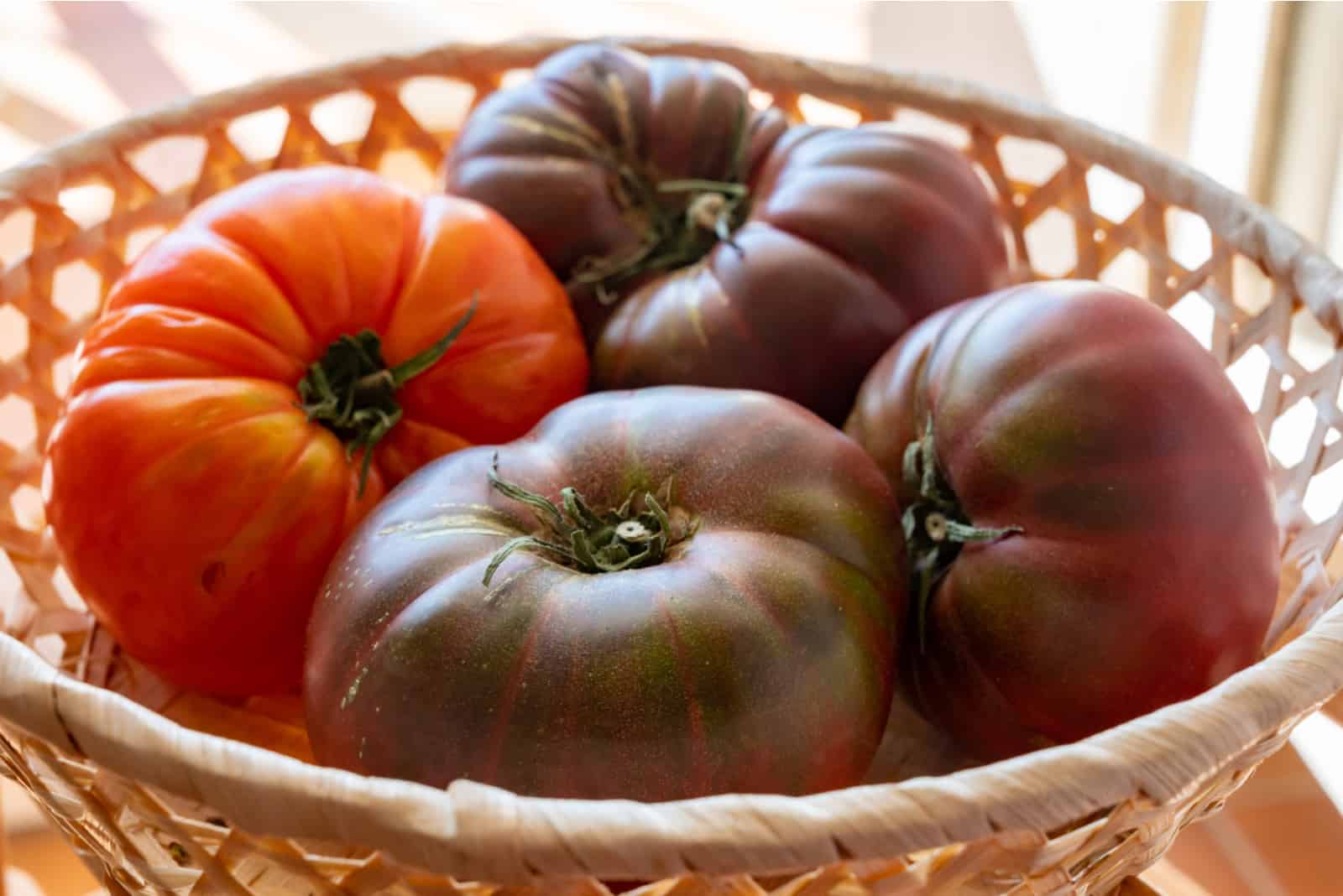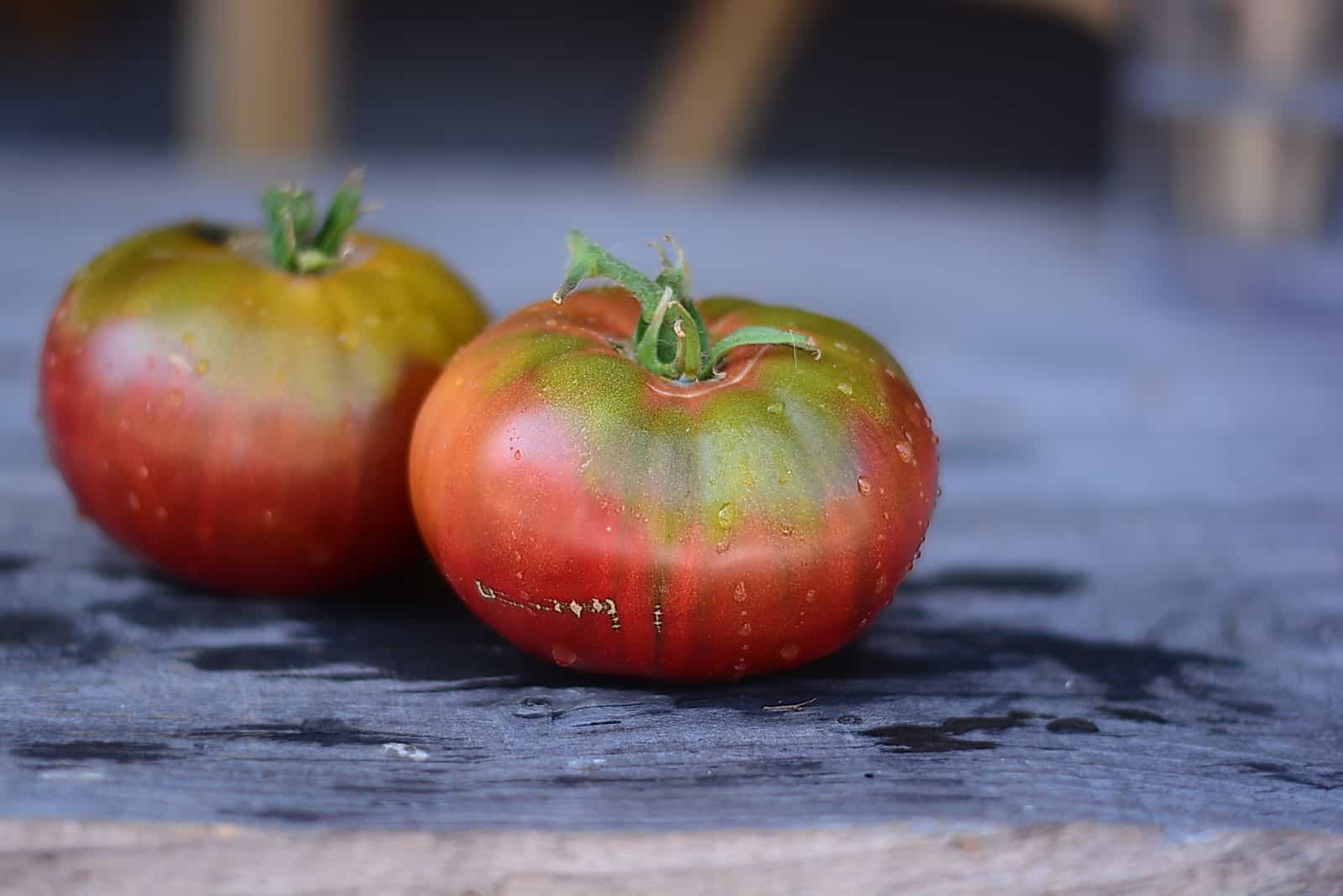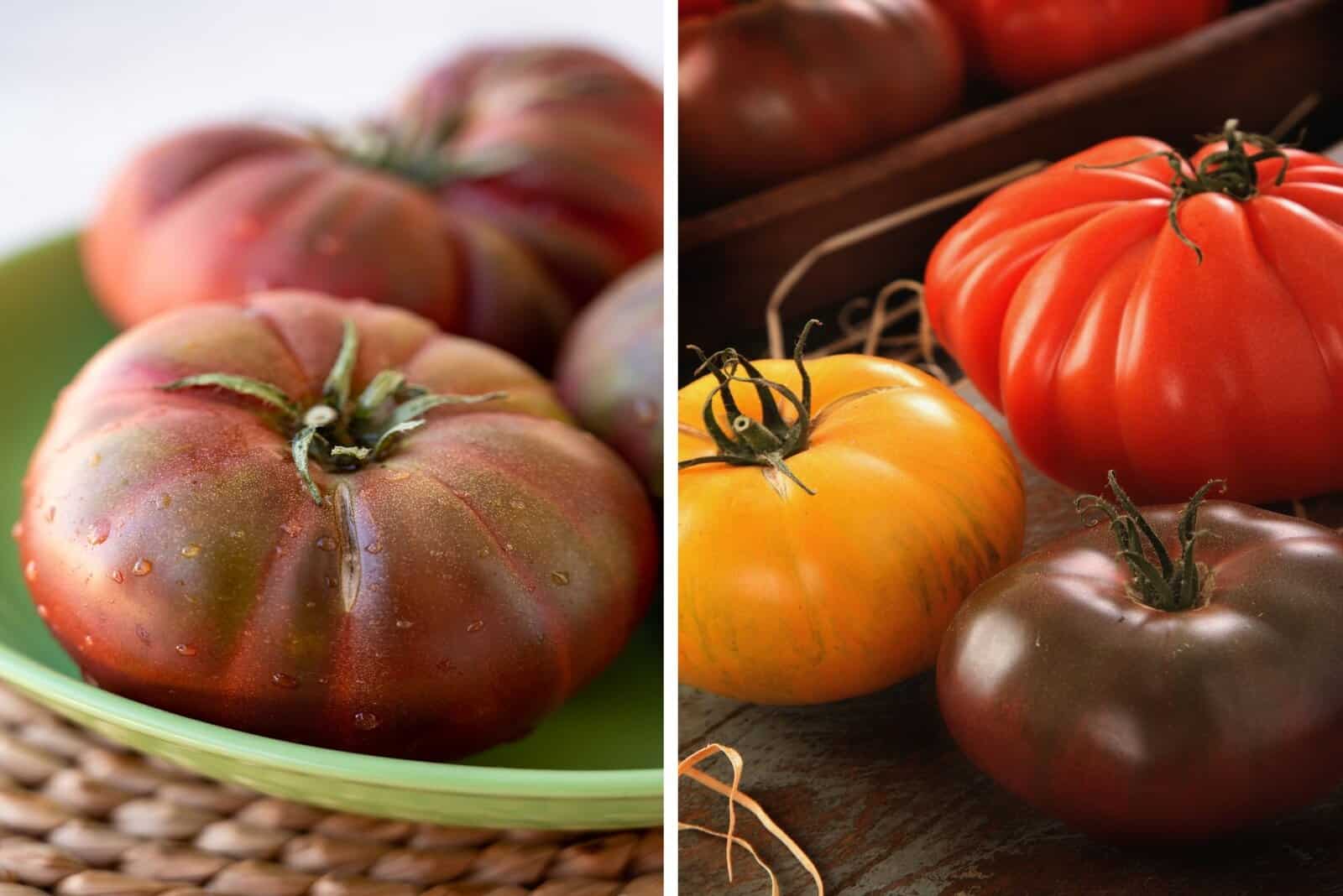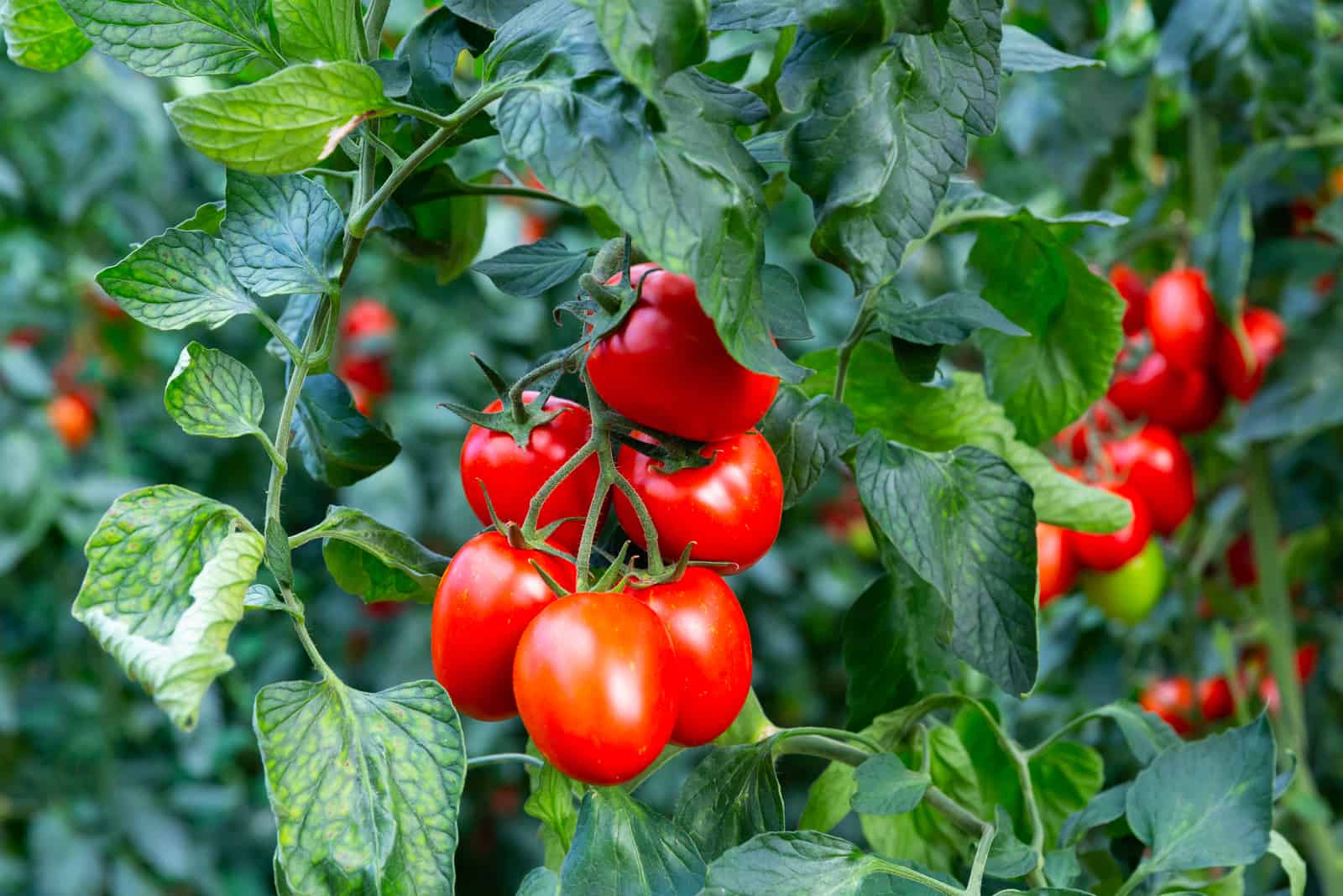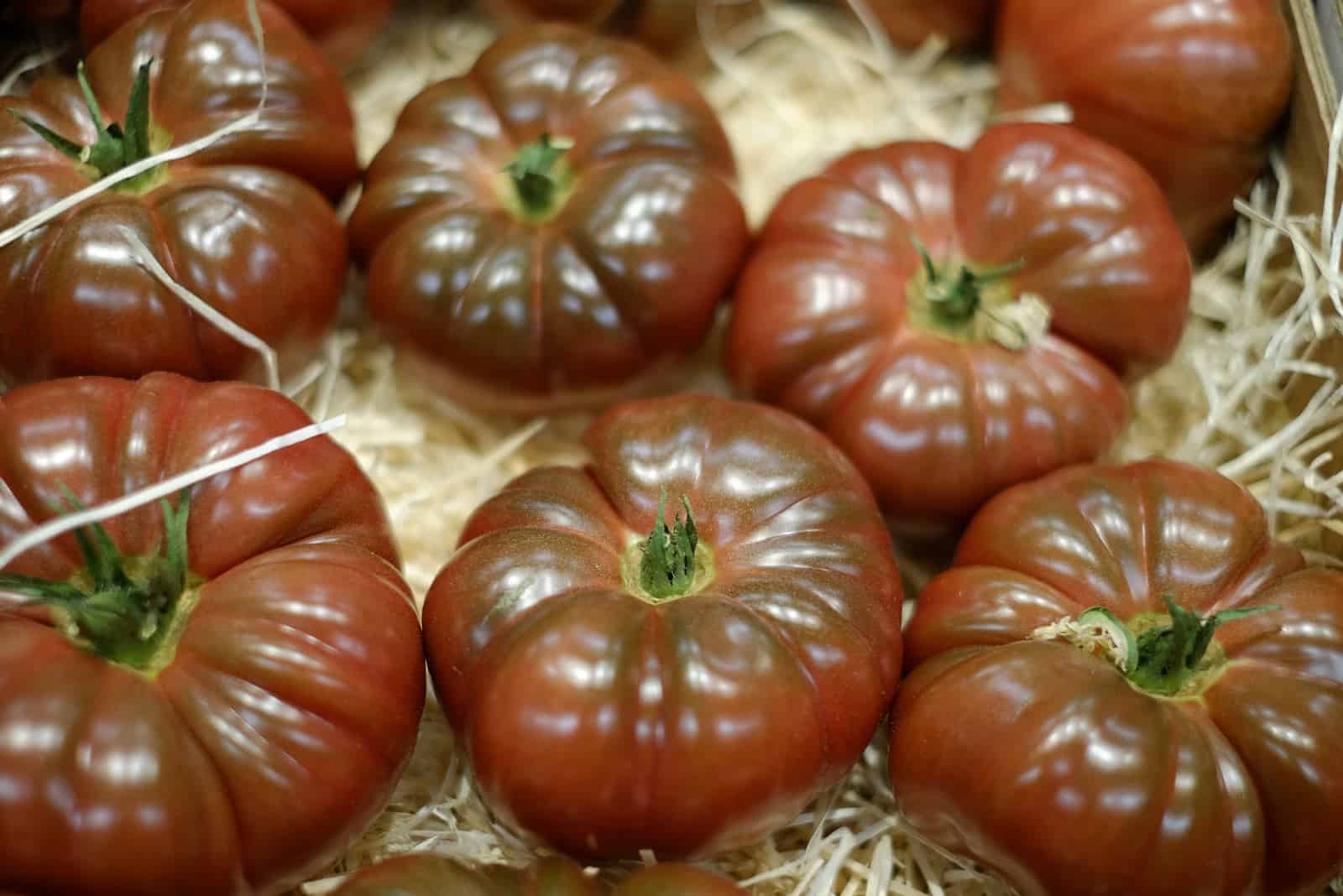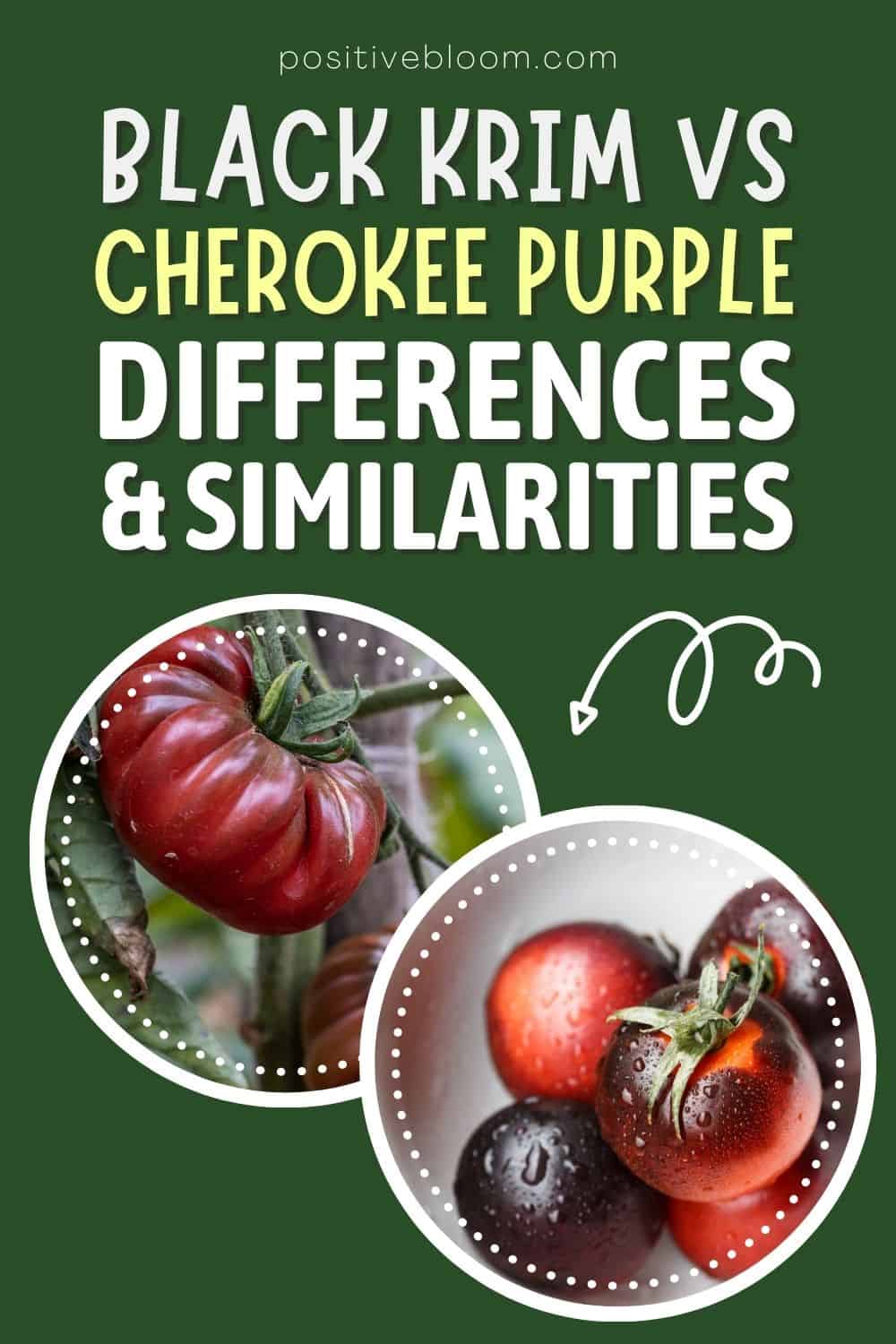Positive Bloom is an Amazon Associate and we earn from qualifying purchases through these links at no extra cost to you.
Tomatoes are a favorite ingredient for salads, stews, and sauces. This article will discuss two very interesting varieties of tomatoes, so read on to discover everything you need to know about Black Krim vs Cherokee purple tomatoes.
First, some general information:
[table id=11 /]
Now that you know the basics about these tomato varieties, let’s take a deeper look into the differences and similarities between them. Who knows, perhaps you might even be inspired to grow some of your own!
Black Krim vs Cherokee Purple Tomato
No two things on earth are the same, and this is true for tomatoes. Black krim vs cherokee purple are both amazing slicer tomatoes (meaning that you don’t have to cook them in order to eat them), but there are certain differences that will help you differentiate between them.
Color
Black krim vs cherokee purple – both are varieties of black tomatoes. However, there is a slight difference in their color which can help you distinguish between them.
The Black Krim is usually darker than the Cherokee purple, even though they are both shades of brownish purple. Both varieties have green shoulders, though they are sometimes brown, even after reaching maturity.
The main difference in color is that the black krim can actually reach a darker color that is almost black, but only if it’s grown in a greenhouse and receives the care it requires.
Flavor
The differences between black krim and cherokee purple tomato flavors are minute, but they are still there.
The black krim has a rich flavor, but it’s more balanced than the cherokee. It has a pungent, but still sweet and savory flavor.
The Cherokee purple, on the other hand, has a more intense flavor with very subtle notes of smokiness. The cherokee is also more acidic in flavor, so if you’re cooking with them, be sure to add some sugar to neutralize the acidity of the tomato taste.
Size
Both of these varieties are quite large (and are outright enormous compared to cherry tomatoes). Cherokee purple tomatoes often reach a weight of 1 pound (450g), and can even be bigger than that!
The Black krim, on the other hand, weighs between 8 and 12 oz (220-340g) on average. It can reach a weight of 1 pound (450g), but not as often as with the cherokee.
Both varieties grow up to 5-7 feet (1.5-2 meters) and require trellising or staking.
However, both of these beefsteak tomatoes are perfect for sandwiches, no matter the size they reach.
Time Of Maturation
Both black krim vs cherokee purple are mid-season tomatoes that will go perfectly with any sandwich or burger.
In general, there isn’t much difference between the time of ripening for these two varieties. It takes around 75-80 days for a black krim to reach maturity.
This period is slightly longer for the cherokee purple (80-85 days), which is probably due to the fact that cherokees are usually larger than black krim tomatoes.
However, both of these large tomato varieties would make a great addition to your vegetable garden, and would sit quite nicely between Paul Robeson and Brandywine.
Black Krim vs Cherokee Purple: Common Issues
Both of these plants are fairly pest and disease resistant. However, there are certain diseases that do attack these plants.
The Black krim tomato is more susceptible to sunscald, whereas the cherokee purple is more sensitive to fungal infections, especially early on in the season.
History
Black krim vs cherokee purple – both of these heirloom varieties have interesting histories.
The black krim is a Ukrainian heirloom tomato. Rumor has it that after the Crimean War in 1856, soldiers took tomato seeds back to their families who then passed them onto others.
This is a beautiful legend, but there is a real story that tells us how the Black Krim spread outside of Crimea. Swede Lars Olov Rosenstrom introduced it to SSE (Seed Savers Exchange) in 1990. Even though the true story of its dissemination is not so interesting, the black krim still fascinates everyone who sees them with their color.
The discovery of the Cherokee purple begins with John Green from the state of Tennessee. He sent tomato seeds given to him by his neighbor to his friend Craig LeHoullier. LeHoullier was amazed by the dark color and rich flavor of the tomatoes and simply had to know where they came from.
The neighbor who gave him the seeds said that the Cherokee Indians had given them to her family, and they have been in their possession ever since.
Black Krim Tomato vs Cherokee Purple Similarities
Black krim vs cherokee purple are both varieties of black tomatoes, and if you’re a passionate grower of tomatoes you might want to add these to your own garden.
There are many similarities between them, and the most important is that they require the same growing conditions.
Tomato Variety
Both black krim and cherokee purple are cultivars of tomato plants which will always attract attention at the farmer’s market.
There are determinate and indeterminate tomatoes. Both black krim and cherokee purple are indeterminate tomatoes, which means that they keep producing fruit until the arrival of the first frost, which eventually kills them.
Care Guide
Caring for black tomatoes is no different than caring for other, less exotic varieties. Just like any plant, they have their light and water requirements, and now we’ll take a look at how you can make growing tomatoes of your own simple and easy.
You can also extend your knowledge with a gardening book from below that can give you some amazing tips for growing not only tomatoes, but also many different sorts of veggies.
[lasso id=”2840″ link_id=”1021″ ref=”amzn-basic-soil-science-for-successful-vegetable-gardening-7-simple-steps-to-ensure-your-traditional-raised-bed-container-or-no-till-garden-isnt-a-weed-filled-failure”]
Light
Both Cherokee purple and black krim require full sun exposure. This means that they need direct sunlight for at least 6-8 hours a day.
If you don’t have a place that is always sunny, you can grow them in a greenhouse or even use some grow lights if necessary.
[lasso id=”2478″ link_id=”1022″ ref=”amzn-hytekgro-led-grow-light-45w-plant-lights-red-blue-white-panel-growing-lamps-for-indoor-plants-seedling-vegetable-and-flower-2-pack”]
Provide them with enough sunlight and you will see high yields in no time.
Temperature
The ideal temperature for growth and fruit production of tomatoes is 65-75ºF (20-24ºC).
Tomato plants are quite sturdy, but if the daytime temperature is constantly below 60ºF (15ºC) their growth will slow and fruit production will be reduced.
Nighttime temperatures shouldn’t be too low either (not lower than 55ºC (13,5ºC) because this will prevent the production of pollen, and the flowers that open the next day will not be pollinated.
Water
All tomatoes require regular watering, including black tomatoes like Black Krim, Black from Tula, and Cherokee purple.
It wouldn’t be a bad idea to give 1-2 inches (2.5-5cm) of water to your black tomatoes once a week, but if you’re afraid of overwatering your tomatoes, you can check if the topsoil (approximately 2 inches or 5cm) is dry and water if it is.
This is also a good way of avoiding root rot and other fungal diseases.
Soil And Fertilizer
Both black krim and cherokee purple love slightly acidic soil (pH level 6.0-6.8) rich in nutrients and organic content (you might want to consider adding compost).
Make sure the soil is also well-draining so your plants don’t end up water-logged.
You will also want to fertilize your plants in order to get optimal results. Be careful not to over-fertilize your tomatoes: once a month is ideal and won’t lead to fertilizer burn.
Transplant
You might want to consider transplanting your black tomatoes more than once because it will improve their root system. However, not transplanting won’t result in a catastrophe, so don’t worry too much.
You need to take many things into consideration when transplanting plants.
First, you need to harden your plants a bit.
This means taking them outside for a few days before transplanting so they can acclimatize to the weather. Don’t leave them in direct sunlight, though – find something to filter the light as the seedlings are still young and tender.
Next, you should prepare the soil. Mix compost into the ground soil or your prefered potting mix as this will improve drainage and aeration, while also giving the soil all the nutrients tomato plants need.
Also, it’s a great idea to mulch your tomatoes’ new home to help retain heat and moisture.
Pollination
Tomatoes are self-pollinating plants, which means that you don’t need other cherokee purple plants in order to get fruit. All you need is help from insects and you will almost certainly get a bigger harvest than last year.
If nature doesn’t cooperate, you can always try hand pollination or buy a fan to blow the pollen onto the female parts.
Pruning
Pruning is mandatory if you want a big harvest of the best tomatoes. During their growth, tomatoes develop side shoots which will suck energy from the plant and stunt growth, which eventually leads to a lower amount of fruit.
You need to cut off these side shoots, a.k.a. suckers, to optimize yield.
4 Stages Of Growing Cycle
Every tomato goes through the same growing cycle:
Seed Germination
The first stage is seed germination. If you can’t decide between black krim vs cherokee purple, try planting their heirloom seeds at the same time. Plant them in early spring, 4-8 weeks before the last frost date, and give them time to germinate and grow.
Plant Growth
The next stage is plant growth. During this stage plants grow true leaf forms and develop root systems. After they reach a height of 3-4 inches (7.5-10cm) they are ready to be transplanted.
Pollination
The third stage is pollination. If plants handled the transplantation very well, acclimatized to the new soil and weather conditions nicely, and have grown their signature yellow flowers, they are now ready to be pollinated. After the pollination, the tomato plants begin to set fruit.
Ripening
The last stage is ripening. The growing season for black krim and cherokee purple isn’t very long, so you will have homegrown tomatoes in your salad before you know it! After they change color to dark red (it usually takes 70-80 days), you can pick them and eat them.
What I love most about black tomatoes is the fact that they are indeterminate plants, so they will continue growing as long as frost doesn’t kill them.
You Asked Us
Even though we covered pretty much everything you need to know about growing black krim and cherokee purple tomatoes and their differences and similarities, there are still some questions left unanswered.
In the following section, you will find the answers to your most frequently asked question about these tomato varieties.
How many seeds are in a Black Krim tomato?
The fruit of the black krim tomato has many seeds. However, the taste of this tomato is so rich and amazing you won’t even notice the seeds.
Are Cherokee Purple tomatoes good?
Cherokee purple tomatoes are incredible! They contain plenty of vitamins, including vitamin C (and we all know the benefits of this), vitamin A (it acts as an antioxidant and is beneficial for eye health and the immune system) and vitamin K (keeps your bones strong).
This tomato combines practicality with pleasure, and you simply won’t be able to get enough of it!
What are the benefits of Black Krim tomatoes?
The black krim is full of vitamin C (necessary for the growth, development, and even repair of tissue) and vitamin A.
The black krim is also loaded with lycopene, a natural antioxidant which is known to help prevent cancer.
It also contains anthocyanin, another antioxidant which may protect you against coronary and heart diseases.
Wrapping Up
What more is there to say about black krim vs cherokee purple? Now you know the similarities and differences between them, all that’s left is to decide which one to plant!
I have to tell you, when I found out about the many benefits both of these varieties have, I planted them both right next to my Amish paste tomato! I simply couldn’t choose!
Until next time!
Like this post? Share or pin it for later!


